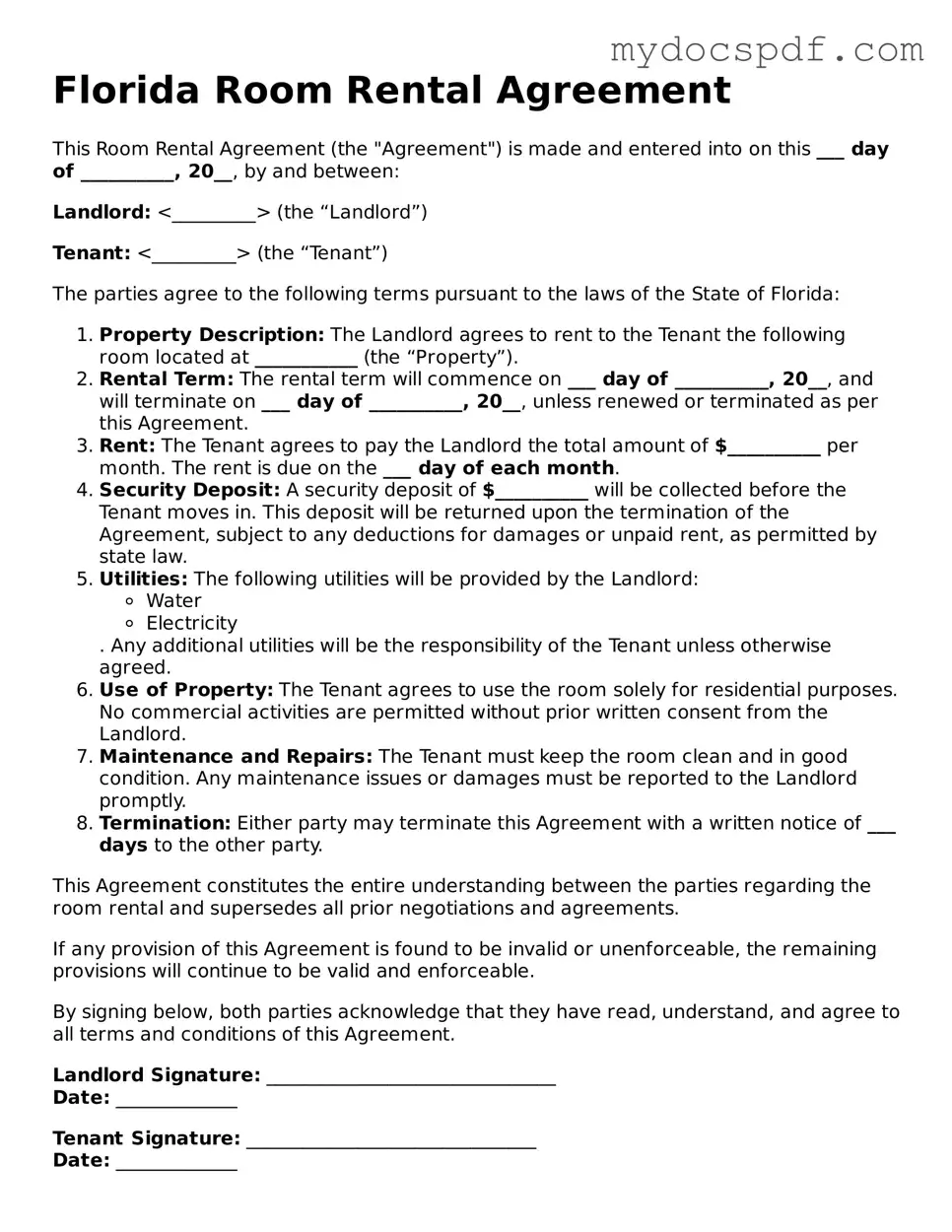Florida Room Rental Agreement
This Room Rental Agreement (the "Agreement") is made and entered into on this ___ day of __________, 20__, by and between:
Landlord: <_________> (the “Landlord”)
Tenant: <_________> (the “Tenant”)
The parties agree to the following terms pursuant to the laws of the State of Florida:
- Property Description: The Landlord agrees to rent to the Tenant the following room located at ___________ (the “Property”).
- Rental Term: The rental term will commence on ___ day of __________, 20__, and will terminate on ___ day of __________, 20__, unless renewed or terminated as per this Agreement.
- Rent: The Tenant agrees to pay the Landlord the total amount of $__________ per month. The rent is due on the ___ day of each month.
- Security Deposit: A security deposit of $__________ will be collected before the Tenant moves in. This deposit will be returned upon the termination of the Agreement, subject to any deductions for damages or unpaid rent, as permitted by state law.
- Utilities: The following utilities will be provided by the Landlord: . Any additional utilities will be the responsibility of the Tenant unless otherwise agreed.
- Use of Property: The Tenant agrees to use the room solely for residential purposes. No commercial activities are permitted without prior written consent from the Landlord.
- Maintenance and Repairs: The Tenant must keep the room clean and in good condition. Any maintenance issues or damages must be reported to the Landlord promptly.
- Termination: Either party may terminate this Agreement with a written notice of ___ days to the other party.
This Agreement constitutes the entire understanding between the parties regarding the room rental and supersedes all prior negotiations and agreements.
If any provision of this Agreement is found to be invalid or unenforceable, the remaining provisions will continue to be valid and enforceable.
By signing below, both parties acknowledge that they have read, understand, and agree to all terms and conditions of this Agreement.
Landlord Signature: _______________________________
Date: _____________
Tenant Signature: _______________________________
Date: _____________
